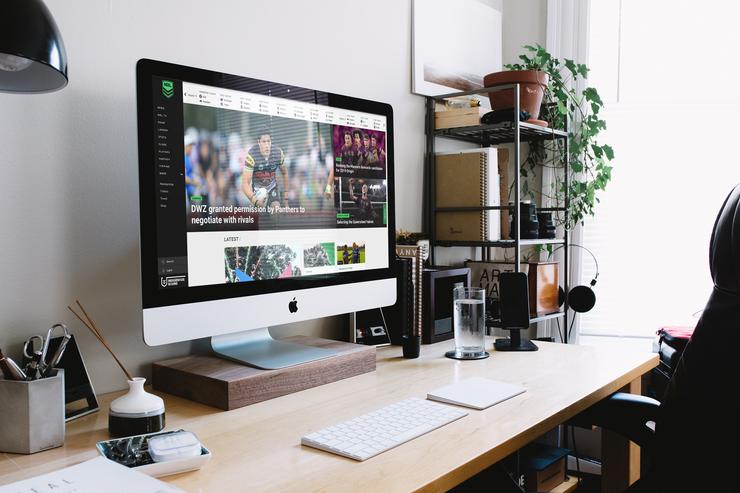 Credit: NRL
Credit: NRL
Jargon Buster: Desktop PC and Laptops
- 802.11a/b/g/n wireless: This is the specification (also known as Wi-Fi) that you need to look for if you want your laptop or desktop PC to be used on a wireless network. 802.11 has four standards: a, b, g and n. The most common one is 'g', but the fastest one is 'n'. Most laptops come with wireless adapters that can run the 'n' standard, but desktops are more often connected with an ethernet cable, so check that a wireless network card is included if you need the connectivity.
- CPU: This stands for 'central processing unit' and it's the brains of both desktop and laptop computers. A faster CPU will be able to run programs at a faster rate than a slower CPU.
- Ethernet: An Ethernet port is essential if you want to connect your desktop PC to a network or broadband modem. 10/100/1000 or Gigabit ethernet is the current standard in ethernet connectivity.
- Graphics processor: Also known as a GPU (graphics processing unit), this processor determines how well your desktop PC or laptop will be able to play games. A powerful graphics processor will provide a smoother gaming experience than a slower graphics processor. A graphics processor may also come with its own dedicated portion of RAM.
- Hard Drive/Solid State Drive (SSD): This is the physical disk where your operating system, programs and data are stored. The operating system, your programs and data are all loaded from here and put into RAM when you use them. Hard drive capacity is measured in gigabytes (GB) or terabytes (TB) — 1000GB is equal to 1TB. A higher capacity drive will be able to store more programs and data.
- Netbooks: A netbook is a small laptop (usually 10-inche in size) that is less powerful than a standard laptop. It can be used for basic tasks such as browsing the Internet, creating documents, viewing photos and watching videos. The small size and light weight of a netbook makes it ideal if you need a device to use while travelling, whether commuting or holidays, for example.
- RAM: This stands for 'random access memory'. It's a temporary storage area where all of your programs and data files are loaded. The more RAM you have, the more programs you will be able to load and the more files you will be able to use at the same time. RAM is normally measured in gigabytes (GB), with its speed measured in megahertz (MHz)
- USB 2.0/3.0 port: USB stands for 'universal serial bus' and it's a port that can be used to connect many different types of devices, from a mouse to a printer. USB 3.0 ports are the fastest, but still more common are USB 2.0 ports. USB 3.0 ports can be found on all the latest laptops and desktop PCs. Both types of ports look the same and will be able to accommodate the same devices, but USB 3.0 devices will run at the 2.0 speed when plugged into a USB 2.0 port.
- USB Type-C/Thunderbolt: The latest evolution of USB connectivity, USB-C is the prevalent port option on new Apple computers and is gaining traction on laptop and desktop PCs due to its combination of fast data transfer, the ability to transmit audio and video, and increased power transfer to be able to handle all the requirements of charging larger devices such as laptops.
 Credit: Intel
Credit: Intel A Thunderbolt 3 port uses the same connector as USB-C, but is signified by a lightning bolt instead of the traditional USB logo. Thunderbolt provides data transfer speeds up to four times faster than USB 3.1, as well as the ability to chain multiple thunderbolt-compatible hard drives together to just one port.While all USB-C devices will work in Thunderbolt ports, early Thunderbolt products were not designed with back compatibility to USB-C - double check to make sure your Thunderbolt devices are able to connect to a USB-C port. Click here for our guide to the best USB Type-C cables.
This article was originally written by Elias Plastiras but updated by Michael Serban in 2019 and by Fergus Halliday in 2020.

















